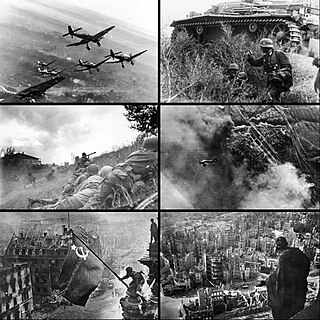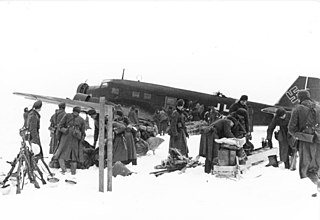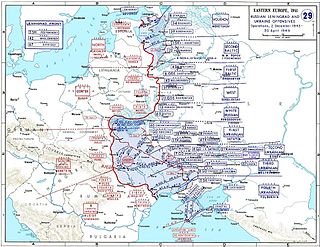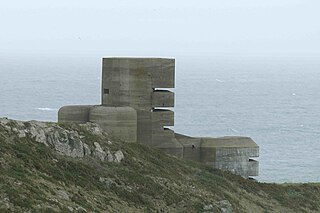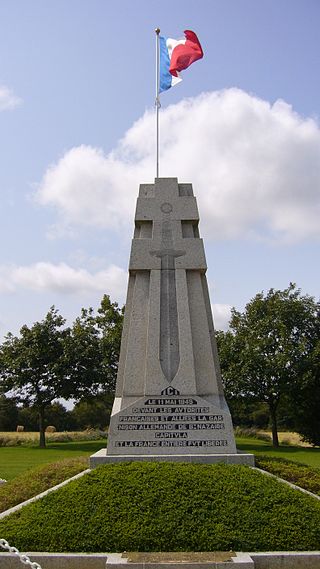| Fortresses | Siege | Commander | Besiegers | Date declared | Date siege started | Date surrendered | Length of siege | Notes |
|---|
  Belle Île, Groix and Lorient, French State, Military Administration in France Belle Île, Groix and Lorient, French State, Military Administration in France | Lorient pocket |  Wilhelm Fahrmbacher Wilhelm Fahrmbacher  |  United States Armed Forces United States Armed Forces | 19 January 1944 | 12 August 1944 | 10 May 1945 | 0,000,2718 months and 4 weeks |
  Berlin, Province of Brandenburg, Free State of Prussia, Gau Berlin, Greater German Reich Berlin, Province of Brandenburg, Free State of Prussia, Gau Berlin, Greater German Reich | Battle in Berlin |  Bruno Ritter von Hauenschild → Hellmuth Reymann → Ernst Kaether → Bruno Ritter von Hauenschild → Hellmuth Reymann → Ernst Kaether →  Adolf Hitler → Adolf Hitler →  Helmuth Weidling Helmuth Weidling  |  Soviet Armed Forces Soviet Armed Forces  Armed Forces of the Republic of Poland Armed Forces of the Republic of Poland
| c. Beginning of February 1945 | 23 April 1945 (encirclement of Berlin complete on 27 April 1945) | 2 May 1945 | 0,000,0091 week and 2 days | Called the Berlin Defense Area. |
 Bobruysk, Army Group Rear Area Command Bobruysk, Army Group Rear Area Command | Bobruysk offensive |  Adolf Hamann ( POW ) Adolf Hamann ( POW ) |  Soviet Armed Forces Soviet Armed Forces - Workers' and Peasants' Red Army
| 22 June 1944 | 27 June 1944 | 29 June 1944 | 0,000,0022 days | Now called Babruysk. |
  Boulogne-sur-Mer, French State, Military Administration in France Boulogne-sur-Mer, French State, Military Administration in France | Operation Wellhit |  Ferdinand Heim Ferdinand Heim  |  British Armed Forces British Armed Forces  Royal Air Force Royal Air Force
 Canadian Armed Forces Canadian Armed Forces
| 17 September 1944 | 17 September 1944 | 22 September 1944 | 0,000,0055 days | |
  Breslau, Province of Lower Silesia, Free State of Prussia, Gau Lower Silesia, Greater German Reich Breslau, Province of Lower Silesia, Free State of Prussia, Gau Lower Silesia, Greater German Reich | Siege of Breslau |  Battle Commander Karl Hanke Battle Commander Karl Hanke |  Soviet Armed Forces Soviet Armed Forces | 25 July 1944 | 13 February 1945 | 6 May 1945 | 0,000,0822 months, 3 weeks and 2 days | Now called Wrocław. |
  Brest, French State, Military Administration in France Brest, French State, Military Administration in France | Battle for Brest |  Hermann-Bernhard Ramcke Hermann-Bernhard Ramcke  |  British Armed Forces British Armed Forces  United States Armed Forces United States Armed Forces
| 7 August 1944 | 7 August 1944 | 19 September 1944 | 0,000,0431 month, 1 week and 5 days | |
  Budapest, Government of National Unity, Kingdom of Hungary Budapest, Government of National Unity, Kingdom of Hungary | Siege of Budapest |  Karl Pfeffer-Wildenbruch ( POW ) Karl Pfeffer-Wildenbruch ( POW ) |  Romanian Armed Forces Romanian Armed Forces  Soviet Armed Forces Soviet Armed Forces
- Workers' and Peasants' Red Army
| 1 December 1944 | 24 December 1944 | 13 February 1945 | 0,000,0501 month, 2 weeks and 6 days | |
  Calais, French State, Military Administration in France Calais, French State, Military Administration in France | Operation Undergo |  Ludwig Schroeder Ludwig Schroeder  |  British Armed Forces British Armed Forces  Royal Air Force Royal Air Force Royal Navy Royal Navy
 Canadian Armed Forces Canadian Armed Forces
| February or March 1944 | 25 September 1944 | 30 September 1944 | 0,000,0055 days | |
 Channel Islands Channel Islands | Resistance in the German-occupied Channel Islands |  Rudolf Graf von Schmettow → Friedrich Hüffmeier Rudolf Graf von Schmettow → Friedrich Hüffmeier  | Allied Expeditionary Force | February or March 1944 | 2 September 1944 | 9 May 1945 (Guernsey and Jersey)
10 May 1945 (Sark)
16 May 1945 (Alderney)
23 May 1945 (Minquiers) | 0,000,2638 months and 3 weeks | Surrendered after the surrender of the Greater German Reich. |
  Cherbourg, French State, Military Administration in France Cherbourg, French State, Military Administration in France | Battle of Cherbourg |  Karl-Wilhelm von Schlieben Karl-Wilhelm von Schlieben  |  United States Armed Forces United States Armed Forces | 6 June 1944 | 22 June 1944 | 27 June 1944 | 0,000,0055 days | |
  Courland Pocket, General District Latvia, Reichskommissariat Ostland, Army Group Rear Area Command Courland Pocket, General District Latvia, Reichskommissariat Ostland, Army Group Rear Area Command | Courland Pocket |  Ferdinand Schörner → Lothar Rendulic → Walter Weiß → Lothar Rendulic → Heinrich von Vietinghoff → Lothar Rendulic → Carl Hilpert Ferdinand Schörner → Lothar Rendulic → Walter Weiß → Lothar Rendulic → Heinrich von Vietinghoff → Lothar Rendulic → Carl Hilpert  | | 10 October 1944 | 31 July 1944 (encirclement of the Courland Pocket complete on 10 October 1944) | 10 May 1945 | 0,000,2839 months, 1 week and 3 days | Surrendered after the surrender of the Greater German Reich. See Army Group North and Army Group Courland. |
  Crete, Hellenic State, Military Administration in Greece Crete, Hellenic State, Military Administration in Greece | Cretan resistance, Operation Albumen and Operation Mercury II |  Hans-Georg Benthack Hans-Georg Benthack  |  British Armed Forces British Armed Forces  Royal Navy Royal Navy
 Hellenic Army Hellenic Army
| 4 October 1944 | 4 October 1944 | 12 May 1945 | 0,000,2207 months, 1 week and 1 day | Surrendered after the surrender of the Greater German Reich. See Fortress Crete. |
 Crimea, Army Group Rear Area Command Crimea, Army Group Rear Area Command | Crimean offensive, Kerch–Eltigen operation and Battle of the Dnieper |  Erwin Jaenecke → Ferdinand Schörner → Erwin Jaenecke → Karl Allmendinger Erwin Jaenecke → Ferdinand Schörner → Erwin Jaenecke → Karl Allmendinger | | 8 April 1944 | 28 October 1943 (encirclement of Crimea complete on 2 November 1943) | 12 May 1944 | 0,000,1976 months and 2 weeks | |
 Danzig, Danzig Region, Reichsgau Danzig-West Prussia, Greater German Reich Danzig, Danzig Region, Reichsgau Danzig-West Prussia, Greater German Reich | Siege of Danzig |  Dietrich von Saucken Dietrich von Saucken |  2nd Belorussian Front 2nd Belorussian Front  Polish rebels Polish rebels
| 7 March 1945 | 15 March 1945 | 30 March 1945 | 0,000,0152 weeks and 1 day | Now called Gdańsk. |
 Demyansk, Army Group Rear Area Command Demyansk, Army Group Rear Area Command | Demyansk Pocket | | | 22 February 1942 | 8 February 1942 | 20 May 1942 | 0,000,2323 months, 1 week and 5 days | Encircled during the Soviet winter counteroffensive, supplied by air until relieved in May 1942, and evacuated in February 1943. |
  Dieppe, French State, Military Administration in France Dieppe, French State, Military Administration in France | N/A | | N/A | c. Prior to 6 June 1944 | N/A | 1 September 1944 | 0,000,000N/A | Evacuated and liberated without opposition. Also see Operation Fusilade and Operation Jubilee. |
  Dunkirk, French State, Military Administration in France Dunkirk, French State, Military Administration in France | Siege of Dunkirk |  Wolfgang von Kluge → Friedrich Frisius Wolfgang von Kluge → Friedrich Frisius  |  British Armed Forces British Armed Forces - British Army
 Royal Navy Royal Navy
 Canadian Armed Forces Canadian Armed Forces
| 4 September 1944 | 15 September 1944 | 9 May 1945 | 0,000,2367 months, 3 weeks and 3 days | Surrendered after the surrender of the Greater German Reich. |
 Gironde Estuary North, Military Administration in France Gironde Estuary North, Military Administration in France | Operation Jupiter and Operation Venerable |  Hartwig Pohlmann → Hans Michahelles Hartwig Pohlmann → Hans Michahelles  |  French Liberation Army French Liberation Army  United States Armed Forces United States Armed Forces
| 19 January 1944 | 12 September 1944 | 30 April 1945 | 0,000,2307 months, 2 weeks and 4 days | |
 Gironde Estuary South, Military Administration in France Gironde Estuary South, Military Administration in France | Royan pocket |  Christian Sonntag → Otto Prahl Christian Sonntag → Otto Prahl  | | 19 January 1944 | 12 September 1944 | 20 April 1945 | 0,000,2207 months, 1 week and 1 day | |
 Hook of Holland, Reich Commissariat for the Occupied Dutch Territories Hook of Holland, Reich Commissariat for the Occupied Dutch Territories | N/A | Oberst Flinzer  | N/A | 19 January 1944 | N/A | 5 May 1945 | 0,000,000N/A | |
 Ijmuiden, Reich Commissariat for the Occupied Dutch Territories Ijmuiden, Reich Commissariat for the Occupied Dutch Territories | N/A |  Colonel Stahmer → Hans Huttner Colonel Stahmer → Hans Huttner  | N/A | 19 January 1944 | N/A | 5 May 1945 | 0,000,000N/A | |
  Île de Ré and La Rochelle, French State, Military Administration in France Île de Ré and La Rochelle, French State, Military Administration in France | Siege of La Rochelle |  Ernst Schirlitz Ernst Schirlitz  | | February or March 1944 | 12 September 1944 | 7 May 1945 | 0,000,2327 months, 2 weeks and 6 days | |
 Kholm, Army Group Rear Area Command Kholm, Army Group Rear Area Command | Kholm Pocket | | | 23 January 1942 | 23 January 1942 | 5 May 1942 | 0,000,2323 months, 1 week and 5 days | Encircled during the Soviet winter counteroffensive, relieved in May 1942 after prolonged defense. |
 Kolberg, Region of Köslin, Province of Pomerania, Gau Pomerania, Greater German Reich Kolberg, Region of Köslin, Province of Pomerania, Gau Pomerania, Greater German Reich | Battle of Kolberg |  Fritz Fullriede Fritz Fullriede |  Soviet Armed Forces Soviet Armed Forces - Workers' and Peasants' Red Army
 Armed Forces of the Republic of Poland Armed Forces of the Republic of Poland
| 5 November 1944 | 4 March 1945 | 14 March 1945 | 0,000,0101 week and 3 days | Now called Kołobrzeg. |
 Königsberg, Region of Königsberg, East Prussia, Free State of Prussia, Gau East Prussia, Greater German Reich Königsberg, Region of Königsberg, East Prussia, Free State of Prussia, Gau East Prussia, Greater German Reich | Battle of Königsberg |  Otto Lasch ( POW ) Otto Lasch ( POW ) |  Workers' and Peasants' Red Army Workers' and Peasants' Red Army | 21 January 1945 | 26 January 1945 (encirclement of Königsberg complete on 29 January 1945) | 9 April 1945 | 0,000,0732 months and 2 weeks | Now called Kaliningrad. |
 Küstrin, Königsberg Nm., province of Brandenburg, Free State of Prussia, Gau March of Brandenburg, Greater German Reich Küstrin, Königsberg Nm., province of Brandenburg, Free State of Prussia, Gau March of Brandenburg, Greater German Reich | Siege of Küstrin |  Adolf Raegener → Adolf Raegener →  Heinrich-Friedrich Reinefarth Heinrich-Friedrich Reinefarth |  Soviet Armed Forces Soviet Armed Forces - Workers' and Peasants' Red Army
| 25 January 1945 | 31 January 1945 | 30 March 1945 | 0,000,0581 month, 4 weeks and 2 days | Now called Kostrzyn nad Odrą. A small number (<1,000) of the German garrison reached German lines after a breakout during the night of March 29/30 1945 |
  Le Havre, French State, Military Administration in France Le Havre, French State, Military Administration in France | Operation Astonia |  Eberhard Wildermuth Eberhard Wildermuth  |  British Armed Forces British Armed Forces  British Army British Army
 Canadian Armed Forces Canadian Armed Forces
| 7 September 1944 | 10 September 1944 | 12 September 1944 | 0,000,0022 days | |
 Orel, Army Group Rear Area Command Orel, Army Group Rear Area Command | Operation Kutuzov | | | 5 July 1943 | 12 July 1943 | 5 August 1943 | 0,000,0243 weeks and 3 days |
 Posen, Posen Region, Reichsgau Wartheland, Greater German Reich Posen, Posen Region, Reichsgau Wartheland, Greater German Reich | Battle of Posen |  Ernst Mattern → Ernst Gonell † Ernst Mattern → Ernst Gonell † |  Soviet Armed Forces Soviet Armed Forces - Workers' and Peasants' Red Army
 Armed Forces of the Republic of Poland Armed Forces of the Republic of Poland
| 20 August 1944 | 24 January 1945 | 23 February 1945 | 0,000,0304 weeks and 2 days | Now called Poznań. |
  Saint-Malo, French State, Military Administration in France Saint-Malo, French State, Military Administration in France | Battle of Saint-Malo |  Andreas von Aulock Andreas von Aulock  |  United States Armed Forces United States Armed Forces  French Liberation Army French Liberation Army
 British Army British Army
| 19 January 1944 | 4 August 1944 | 17 August 1944 | 0,000,0131 week and 6 days | |
  Saint-Nazaire, French State, Military Administration in France Saint-Nazaire, French State, Military Administration in France | Saint-Nazaire pocket |  Maximilian Hünten → Hans Junck → Captain Mathies Maximilian Hünten → Hans Junck → Captain Mathies  |  United States Armed Forces United States Armed Forces  French Liberation Army French Liberation Army
| 8 August 1944 | 27 August 1944 | 11 May 1945 | 0,000,2578 months and 2 weeks | Surrendered after the surrender of the Greater German Reich. |
 Sevastopol, Army Group Rear Area Command Sevastopol, Army Group Rear Area Command | Crimean offensive | | | 20 June 1942 | 5 May 1944 | 9 May 1944 | 0,000,0044 days | |
 Smolensk, Army Group Rear Area Command Smolensk, Army Group Rear Area Command | Smolensk operation | | | 10 September 1943 | 7 August 1943 | 25 September 1943 | 0,000,0491 month, 2 weeks and 4 days | |
 Stalingrad, Army Group Rear Area Command Stalingrad, Army Group Rear Area Command | Battle of Stalingrad |  Friedrich Paulus Friedrich Paulus  → Karl Strecker → Karl Strecker  |  Soviet Armed Forces Soviet Armed Forces - Workers' and Peasants' Red Army
| 24 September 1942 | 10 September 1942 (encirclement of Stalingrad complete on 22 November 1942 during Operation Uranus) | 1 March 1943 | 0,000,1725 months, 2 weeks and 5 days | Now called Volgograd. By 1 November 1942, 90% of Stalingrad was occupied by Axis forces. On 26 January 1943, during Operation Koltso, Axis forces in Stalingrad were cut into two pockets, with Karl Strecker in command of the northern pocket and Friedrich Paulus in command of the southern pocket. |
  French protectorate of Tunisia French protectorate of Tunisia | Tunisian campaign |  Erwin Rommel → Gustav Fehn → Erwin Rommel → Hans-Jürgen von Arnim Erwin Rommel → Gustav Fehn → Erwin Rommel → Hans-Jürgen von Arnim  |  British Army British Army  United States Armed Forces United States Armed Forces
 Free French Forces Free French Forces
 New Zealand Defence Force New Zealand Defence Force
 Hellenic Armed Forces Hellenic Armed Forces
| 22 February 1943 | 9 November 1942 (encirclement of Tunisia complete on 12 February 1943) | 13 May 1943 | 0,000,1856 months and 4 days | |
 Warsaw, Warsaw District, General Government, Greater German Reich Warsaw, Warsaw District, General Government, Greater German Reich | Lublin–Brest offensive, Vistula–Oder offensive and Warsaw Uprising |  Hellmuth Eisenstuck → Ernst Mock Hellmuth Eisenstuck → Ernst Mock | N/A | 27 July 1944 | 1 August 1944 | 17 January 1945 | 0,000,1695 months, 2 weeks and 2 days | On 16 January 1945, German troops withdrew from Warsaw and the next day the First Polish Army, 2nd Guards Tank Army and 3rd Shock Army entered the city. Also see Festung Warschau |
|


